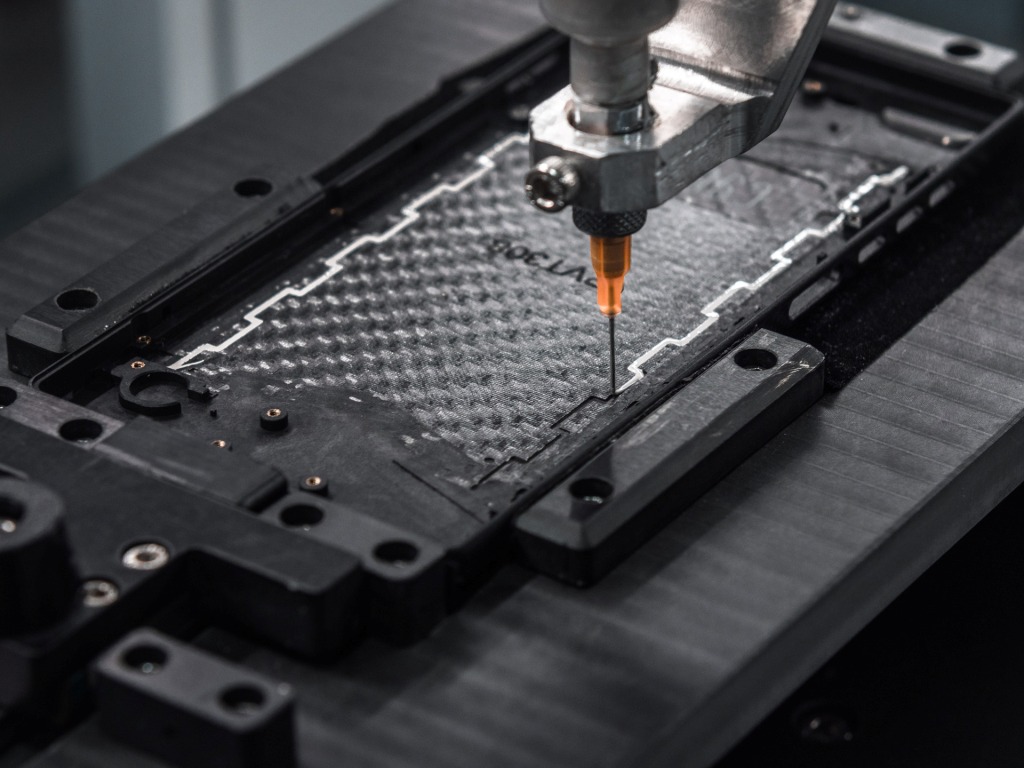- Ultra-thin and extremely light thanks to Tepex composite from LANXESS
- HyRECM Technology unlocks the potential for carbon-based composites in connected devices
- Monocoque design akin to a Formula 1 race car
- Sustainable and recyclable materials
- Repair-friendly design made for long service life
A smartphone that sets new standards for lightness, slim design and sustainability is making its debut on the market this March: the Carbon 1 MK II from Berlin-based start-up Carbon Mobile. “Designed and engineered in Germany, the Carbon 1 MK II reignites miniaturization and drives sustainability in connected devices by replacing plastics and aluminium with advanced composite materials for the first time”, says Firas Khalifeh, CEO of Carbon Mobile.
The base material for the production of the housing is a thermoplastic composite from the LANXESS Tepex Dynalite product range. It is reinforced with fabrics of incredibly fine 1K continuous carbon fibre filaments. “Our composite material, which we developed for extremely lightweight components subjected to considerable mechanical stress, does more than just allow exceptionally thin wall thicknesses. In fact, with its high degree of strength and rigidity, it also helps to make the housing very robust for day-to-day use,” explains Philipp Genders, Tepex expert in application development at LANXESS. “In addition, the matte-black carbon-fibres give the smartphone a truly high-tech look.”
HyRECM Technology – overcoming physical hurdles
Despite their advanced properties for producing robust yet lightweight structures, carbon fibres behave in an electromagnetic shielding manner. This means that they block radio signals, forming a Faraday cage that rather than allowing signals to pass through, instead disperses them around the outer body of the device. Connected devices with carbon fiber, for this reason, have been viewed as an impossibility by the tech industry.
Following four years of research and development, Carbon Mobile’s engineers have developed a revolutionary process to unlock carbon fiber’s potential for connected devices. The patented HyRECM (Hybrid Radio Enabled Composite Material) technology fuses carbon fibers together with a complementary composite material capable of RF signal permeation. To further boost the devices connectivity, a unique 3D-printed conductive ink is integrated into the carbon fiber structure. The result is the first “radio enabled” carbon fiber based material. Applied for the first time in the Carbon 1 MK II, the new technology produces a robust carbon fiber-based housing structure that is not only incredibly thin and light, but also made from less than five percent plastic.
Eric Chan from processing partner Modern Composites Ltd said, “LANXESS and their Tepex materials made the perfect partner in the development of HyRECM Technology. Being able to work with a superior material from Germany ensures the best application possible of this revolutionary technology from launch.”
Lighter than a bag of potato chips
Following the same construction principle as the load-bearing chassis of a Formula 1 car, the housing is designed as a monocoque, or “single shell”. As a result, it makes optimized use of the extreme rigidity of carbon fiber reinforced plastic (CFRP). This contributes significantly to the thin wall thicknesses and low weight of the smartphone and also enables miniaturization. That is because there is no bulky reinforcement taking up space on the inside of the housing. According to Khalifeh, ”Our cutting-edge monocoque design enables a device that weighs only 125 grams, a third lighter than conventional smartphones. At just 6.3 millimeters, it is also 25 percent thinner as well.”
Working toward a world with less electronic waste
Carbon Mobile is committed to sustainable principles. The new smartphone uses only recyclable materials wherever possible. “We want to deliver our contribution to cutting electronic waste and improving sustainability around the world,” says Khalifeh. The composite material used for the housing can also easily be recycled and repurposed for new uses. “Like all products in the Tepex dynalite product line, it can be shredded and then processed on standard injection-molding machines to make high-quality components, either by itself or mixed with suitable new material,” explains Genders. To extend the service life of the smartphone, all its components are designed to be easily replaceable for repair purpose, which also prevents electronic waste from being created.
For more information, visit www.carbonmobile.com






